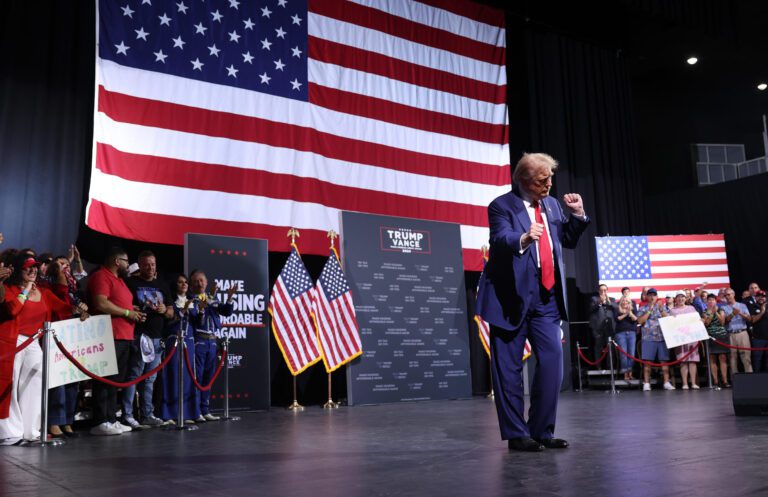Wall Street Brokerage Firms Lower Recession Odds Following US-China Trade Agreement
As the economic landscape shifts, three leading Wall Street brokerage firms have adjusted their forecasts regarding the likelihood of a recession. This change comes on the heels of President Trump’s recent trade arrangement with China, which has eased tensions and instilled a more optimistic outlook.
Major Adjustments in Economic Forecasts
Barclays Revises Recession Predictions
Barclays announced on Tuesday that it no longer anticipates a recession by 2025. The firm has drastically cut its previous expectations for interest rate reductions, asserting:
“We expect a less significant jump in inflation and no recession.”
This statement reflects a reinvigorated confidence among investors and economists in seeing sustained economic growth.
Goldman Sachs Cuts Down Recession Odds
Goldman Sachs has also revised its recession likelihood, now suggesting a 35% chance of a downturn—in contrast to its prior estimate of 45%. The firm has boosted its forecast for Gross Domestic Product (GDP) growth for the U.S., raising its quarterly growth expectations by 0.5% to 1%.
JPMorgan Chase Optimistic About Economic Growth
JPMorgan Chase & Co. has followed suit by adjusting its economic outlook following the tariff agreement with China. Their chief American economist, Michael Feroli, stated:
“The administration’s recent dialing down of some of the more draconian tariffs placed on China should reduce the risk that the U.S. economy slips into recession this year.”
While acknowledging that recession risks are still present, JPMorgan has reduced its estimated probability to below 50%.
Key Takeaways from the Trade Agreement
On Monday, the United States and China announced a tariff reduction deal set to unfold over the next 90 days. Key points from the agreement include:
- U.S. Tariffs on China: Reduced from 145% to 30%
- China’s Tariffs on U.S.: Decreased from 125% to 10%
These reductions are expected to smooth out trade relations and promote a more stable economic environment.
Changes in Monetary Policy Expectations
Goldman Sachs now anticipates only one rate cut from the Federal Reserve in December, down from an earlier projection of three cuts. They foresee further adjustments in March and June 2026. The firm comments:
“The rationale for rate cuts shifts from insurance to normalization as growth remains somewhat firmer.”
Revised Growth Predictions by JPMorgan
JPMorgan has also updated its forecast for 2025 economic growth to a 0.6% increase, a revision from the previous 0.2% estimate. Additionally, inflation, measured by the Personal Consumption Expenditures price index (excluding food and energy), is now projected to rise to 3.5%, down from the prior forecast of 4%.
Inflation Trends
According to the Bureau of Labor Statistics, the consumer price index (CPI) for April rose by 0.2% compared to the previous month. Annually, the CPI has seen a 2.3% increase, marking the lowest rise since February 2021.
Conclusion
The recent adjustments from Barclays, Goldman Sachs, and JPMorgan indicate a cautious but determined optimism regarding the U.S. economy. The trade agreement with China appears to have played a significant role in reshaping these forecasts and may provide a foundation for positive growth in the years ahead.
For comprehensive economic updates and insights, you can explore further with key resources like Goldman Sachs and JPMorgan.
By understanding these economic shifts, investors and businesses can better navigate the evolving landscape. Keeping an eye on global trade dynamics will be crucial as we move further into the fiscal year.


